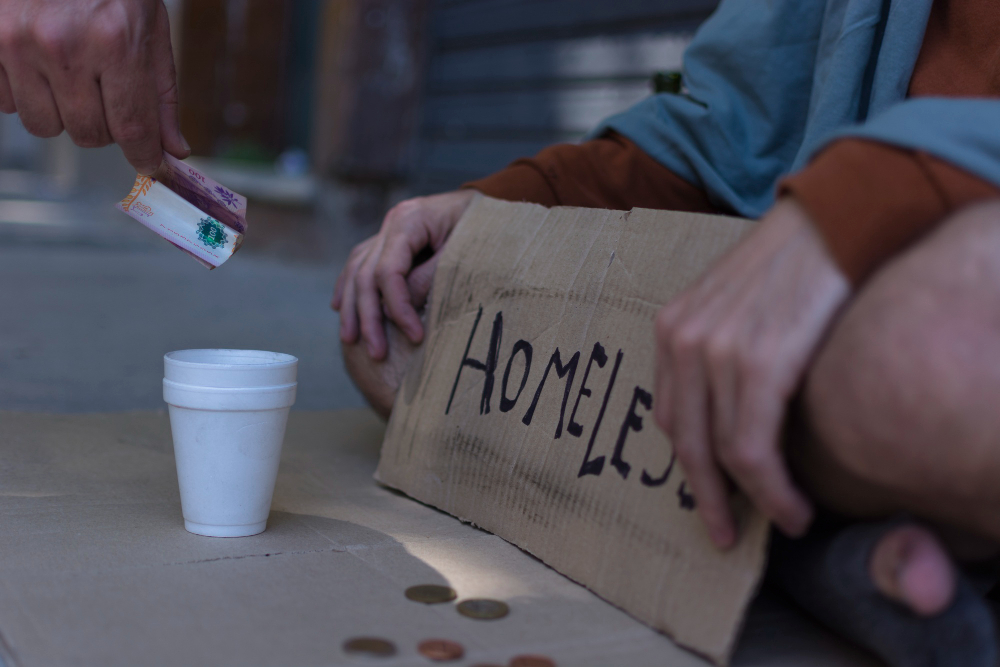LA has a program that aims to identify and assist individuals at high risk of becoming homeless before they lose their housing, addressing a critical gap in current prevention efforts. The initiative comes at a crucial time, as Los Angeles continues to see rising homelessness numbers despite massive spending and increased housing efforts. On average, for every 207 Angelenos who exit homelessness every day, 227 others fall into it, creating what Dana Vanderford of the county’s Homelessness Prevention unit describes as “a bucket with a hole in it.”
The program’s methodology is both sophisticated and comprehensive. Using machine learning algorithms, it analyzes data from seven county agencies, including emergency room visits, mental health crisis care, substance abuse disorder diagnoses, arrests, and sign-ups for public benefits like food aid. This data analysis generates a list of people considered most at-risk for losing their homes, focusing on individuals who aren’t part of any other prevention programs and who are unlikely to reach out for help on their own due to systemic mistrust or generational trauma. Once identified, a team of 16 dedicated case managers divides up the lists and reaches out to these individuals through letters and cold calls.
While AI powers the identification process, the program’s success hinges on the human touch provided by its case managers. These professionals face numerous challenges, including difficulty reaching potential clients due to changing contact information and overcoming initial skepticism about the offer of help. When contact is made, case managers work closely with individuals to determine their most pressing needs and allocate $4,000 to $6,000 in aid per client. Importantly, this assistance isn’t limited to rent payments. Case managers have used funds for various needs, including payday loan debt, appliances, laptops, and even an e-bike for a client whose mental health challenges made public transportation difficult.
The article highlights two compelling stories that demonstrate the program’s real-world impact. Dulce Volantin and Valarie Zayas, a couple who met in prison and struggled with unstable housing, went from renting a bed at a place on Venice Beach to securing a subsidized apartment with on-site support services for Volantin’s mental health needs. Their story underscores how the program can provide not just housing stability but also a foundation for overall life improvement, with Zayas now holding a good job with the transit system. The second story features Ricky Brown, a 65-year-old grandfather who took in his three grandsons after their mother’s death. Already struggling on disability income, Brown found himself thousands of dollars behind on rent and utilities. The program’s intervention offers hope for keeping his family housed and accessing additional support services.
While initial results are promising, with a large majority of the 560 people helped so far staying housed, several questions remain about the program’s long-term effectiveness and targeting accuracy. A formal study, including a randomized control trial, is underway to answer these questions, with results expected in 2026. Key issues being examined include whether a few months of help and a few thousand dollars can make a lasting difference, and if the program is targeting the right individuals – those who would actually end up on the streets without this intervention. The study will compare outcomes with a control group of similar individuals who do not receive assistance.
The potential implications of this program extend far beyond Los Angeles. If successful, this proactive, AI-driven approach could revolutionize homelessness prevention efforts nationwide. San Diego County has already voted to create a similar program using predictive analytics, and other cities may follow suit. The initiative adds to the growing body of evidence on what works to prevent homelessness, complementing other successful strategies like housing vouchers. However, as Beth Shinn, an expert on homelessness prevention at Vanderbilt University, notes, this program is unique in targeting people at much higher risk for losing housing. While this approach may lead to more failures, it also has the potential to make the most significant difference for those at highest risk.


